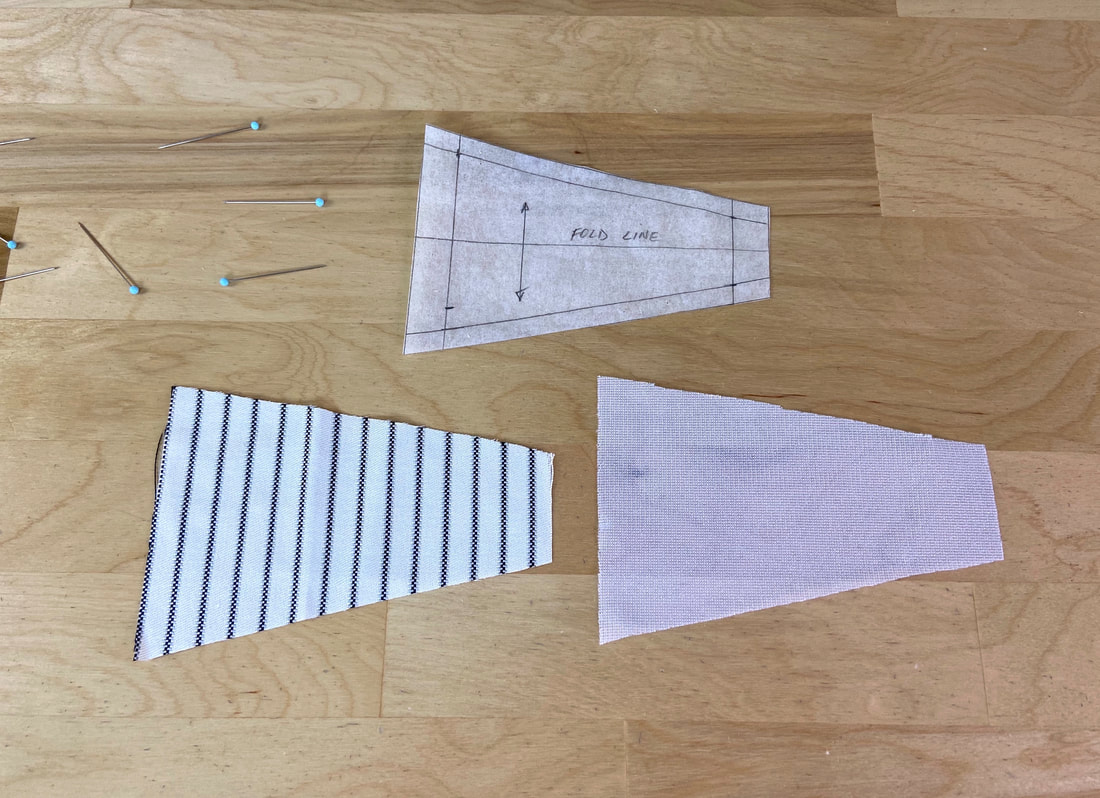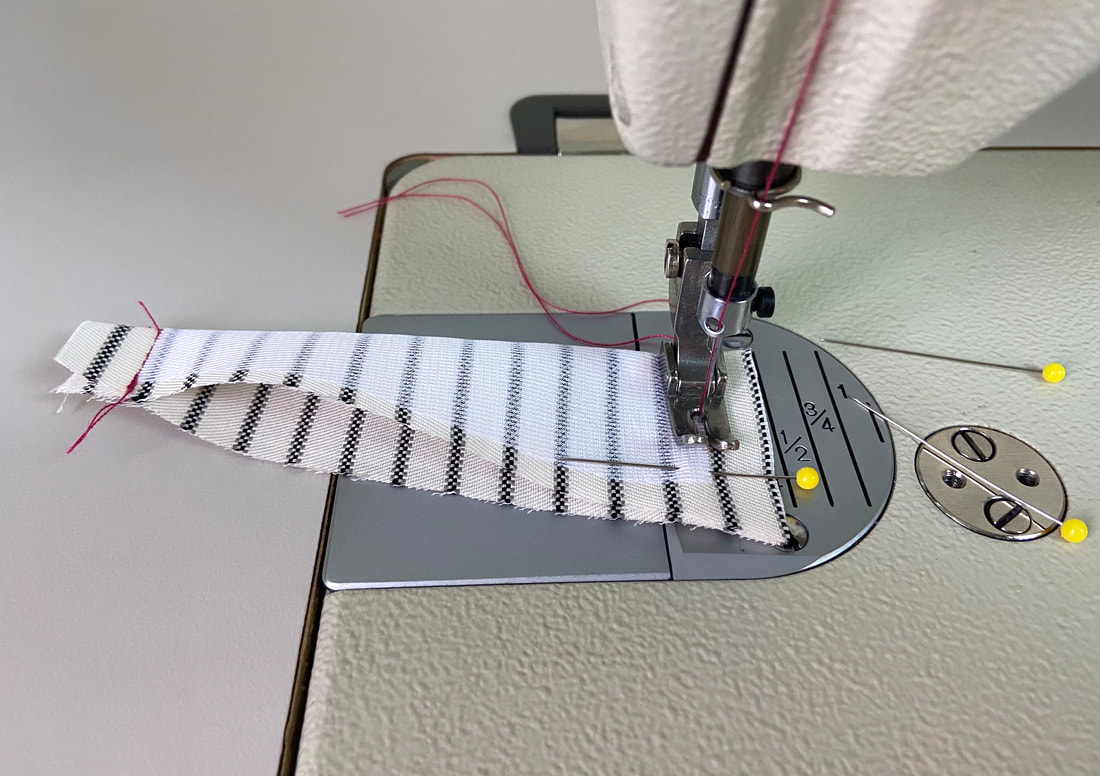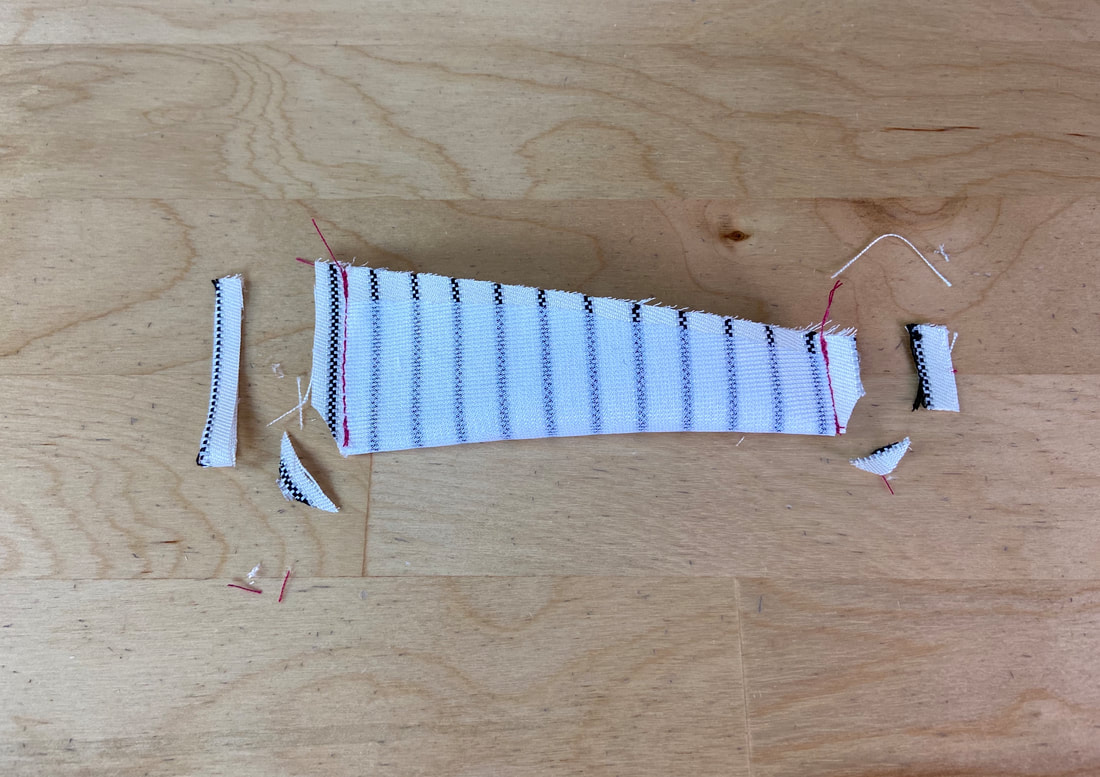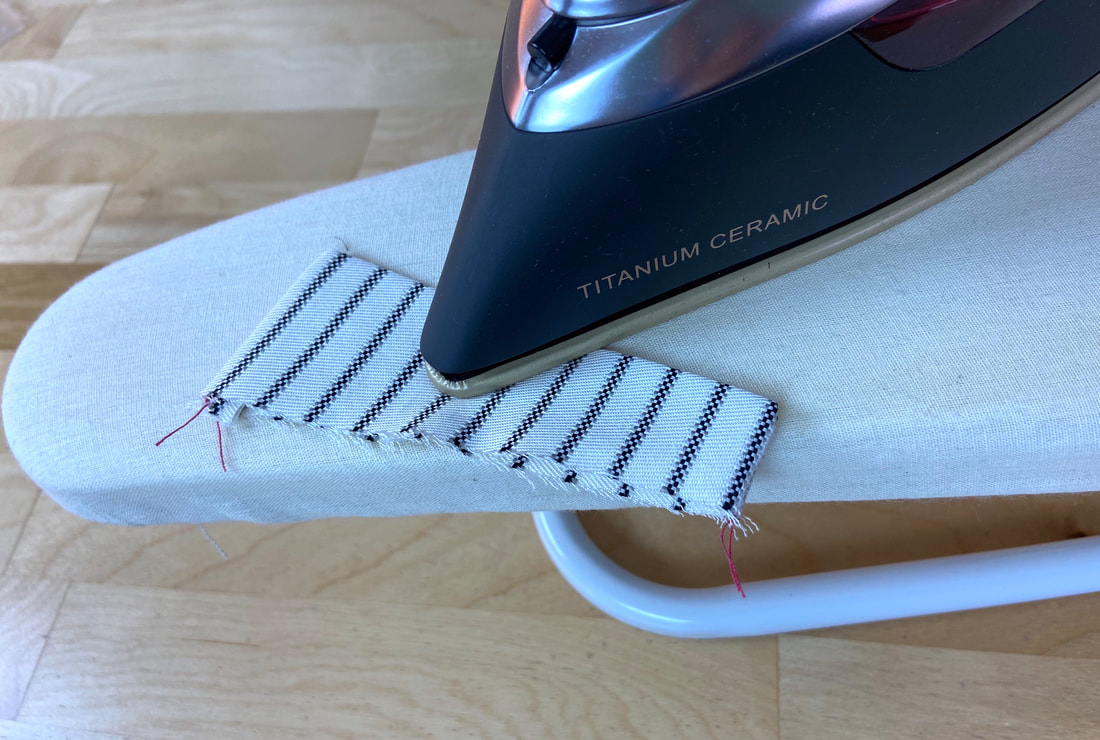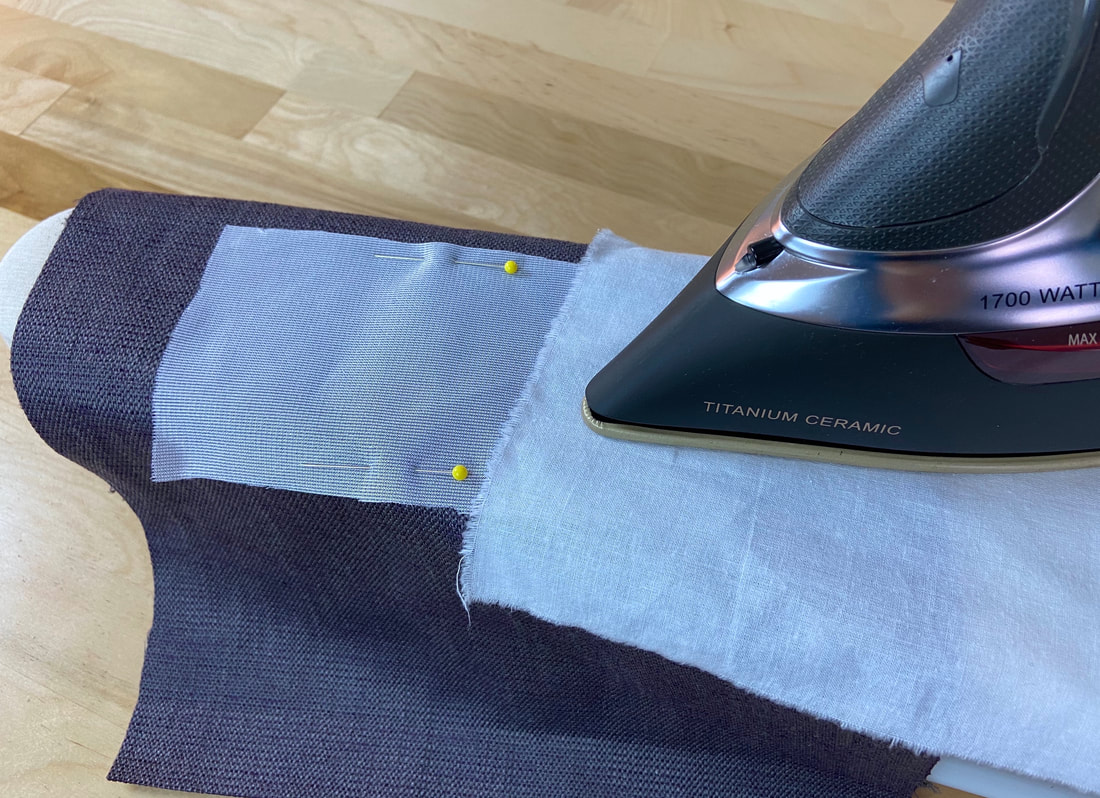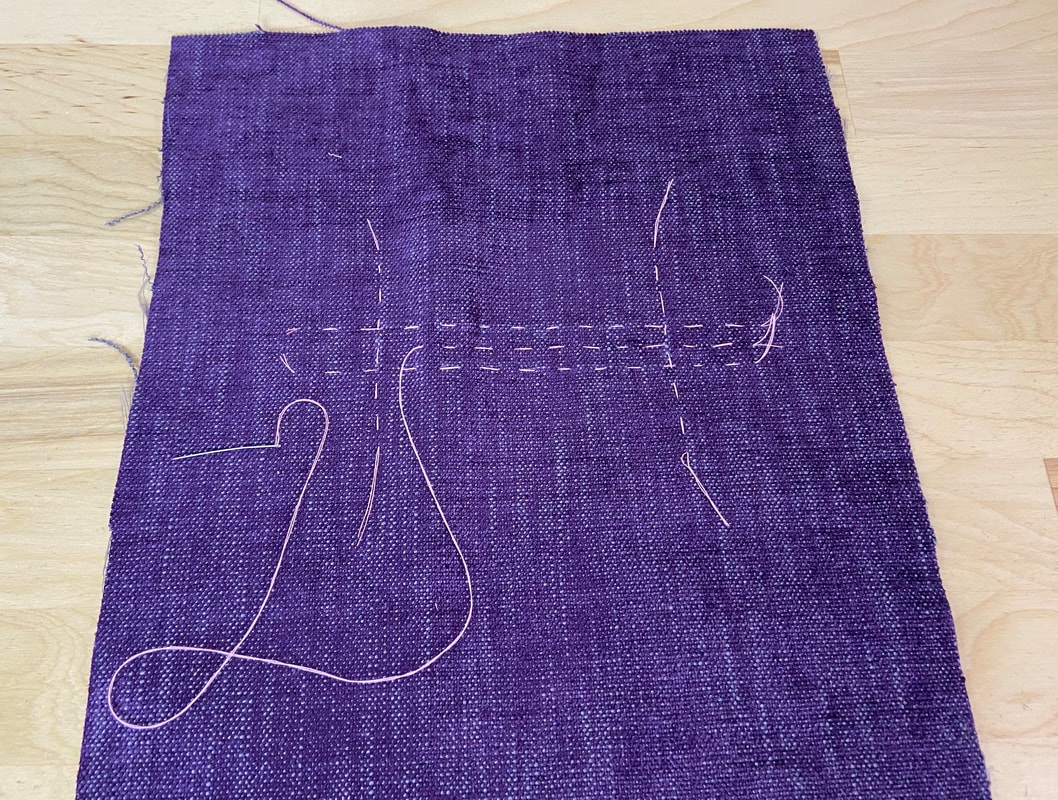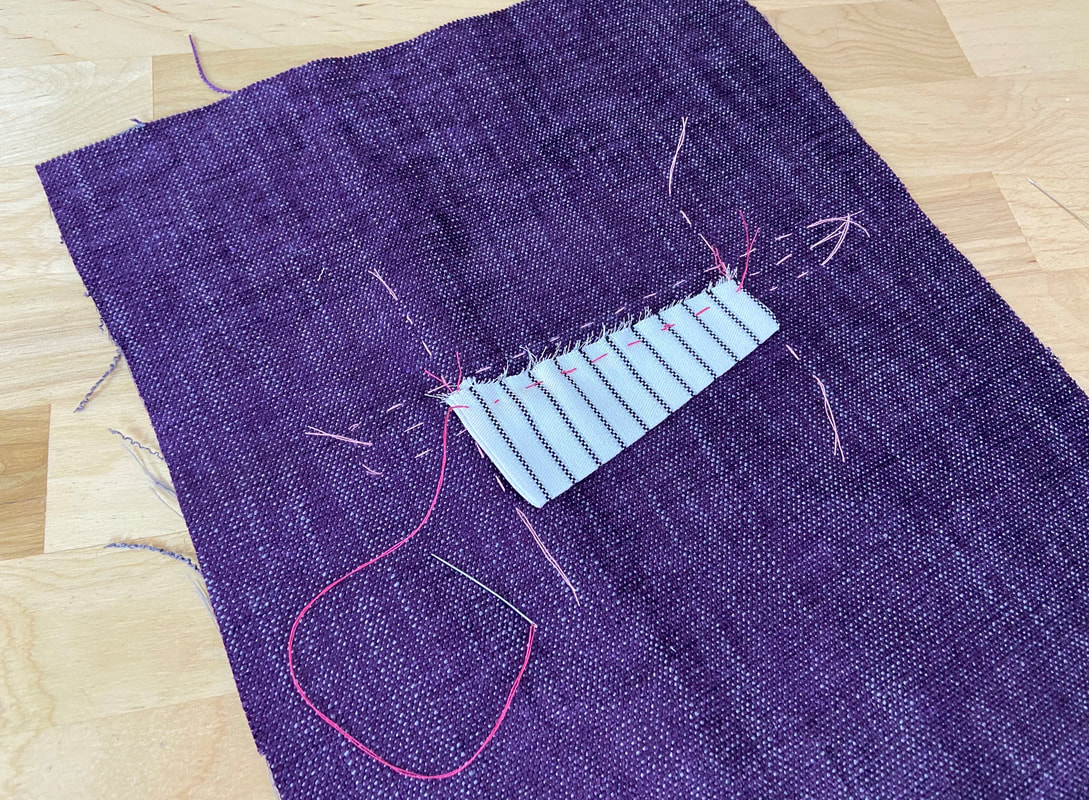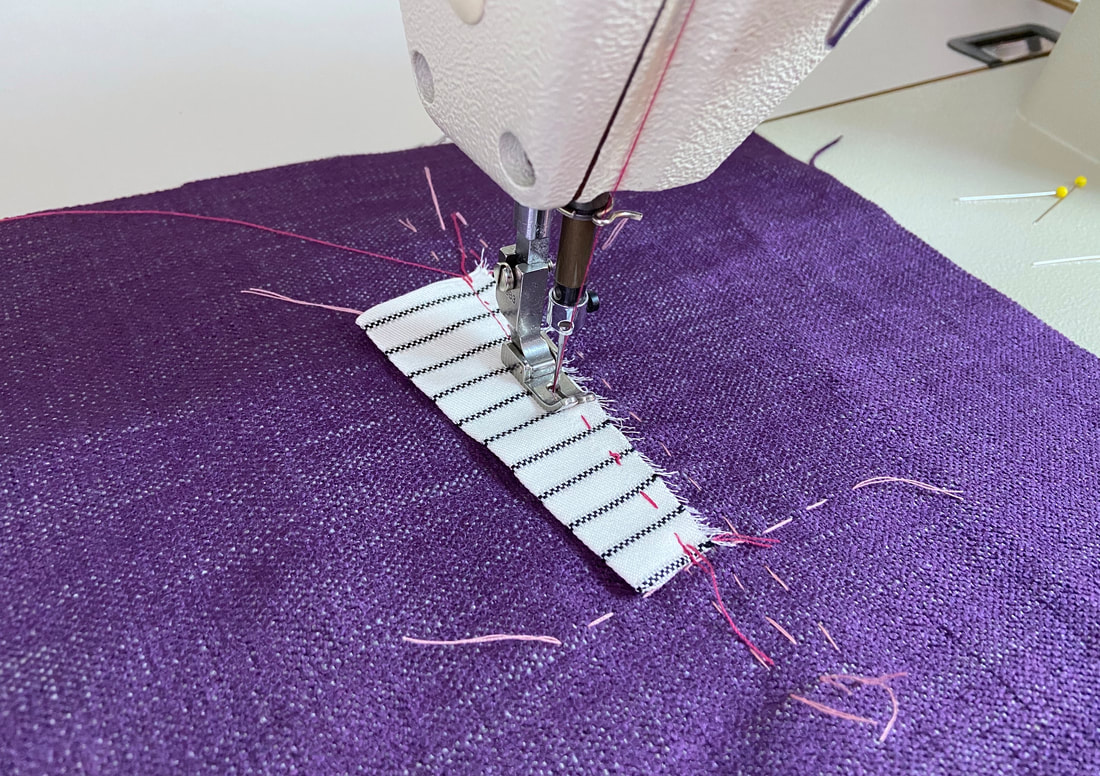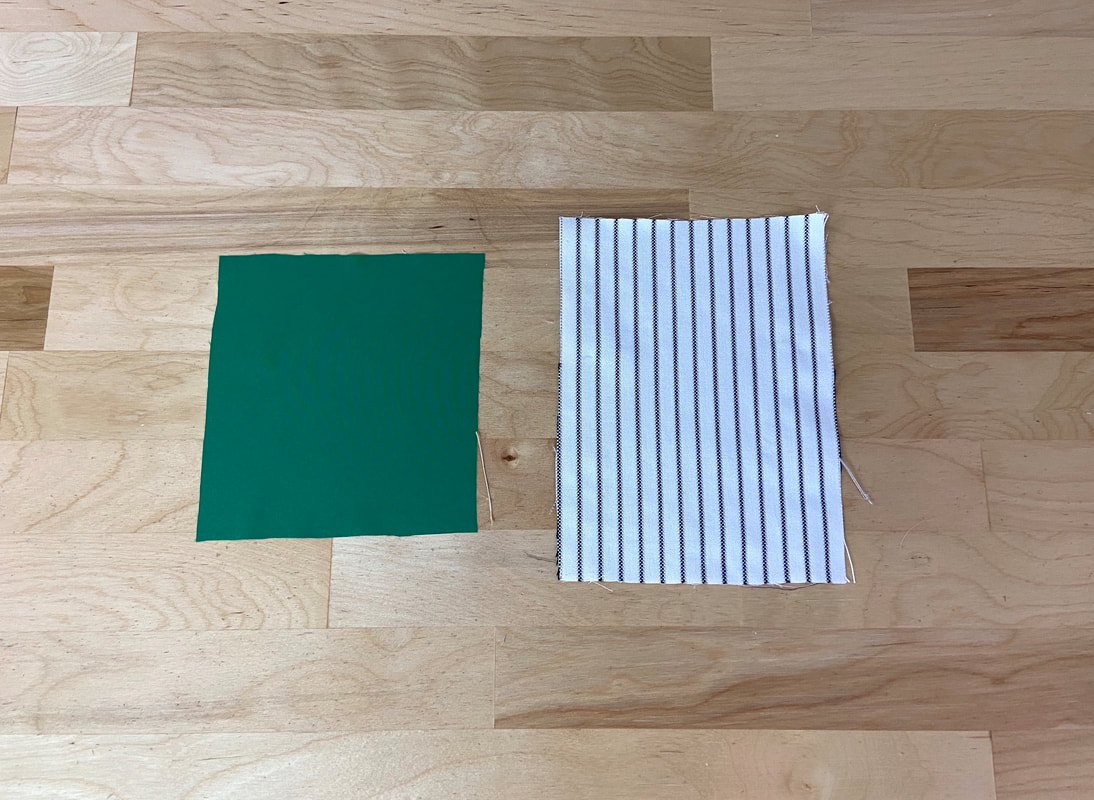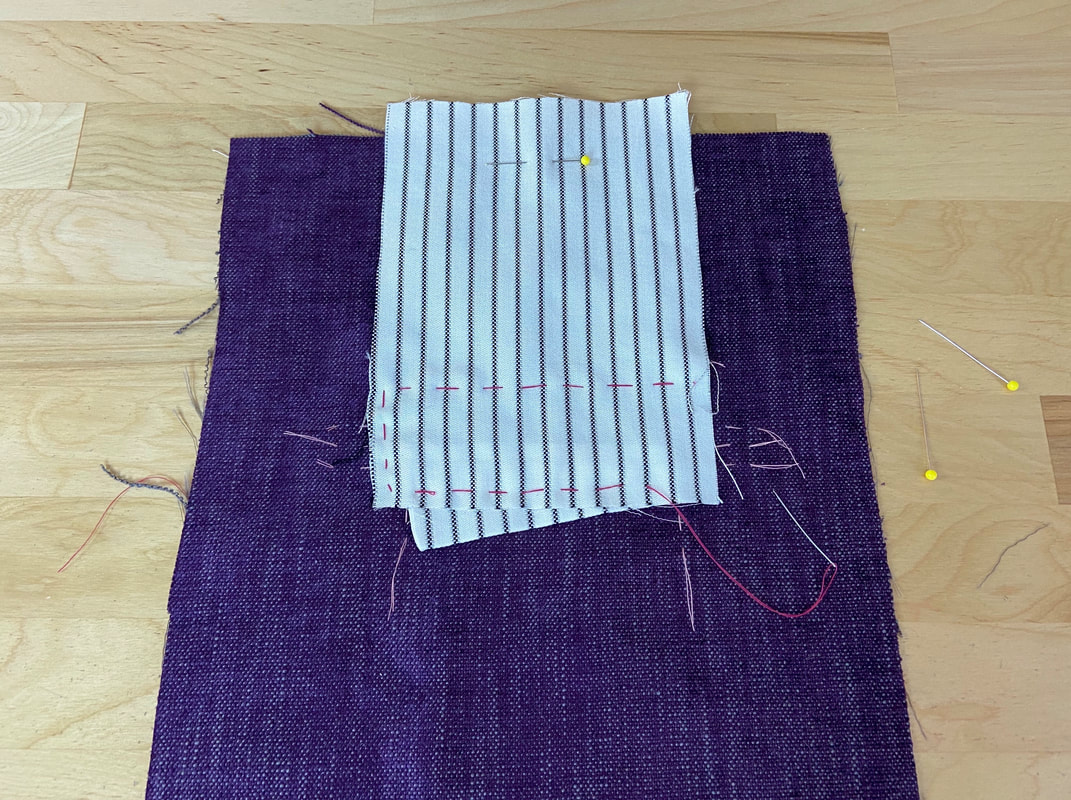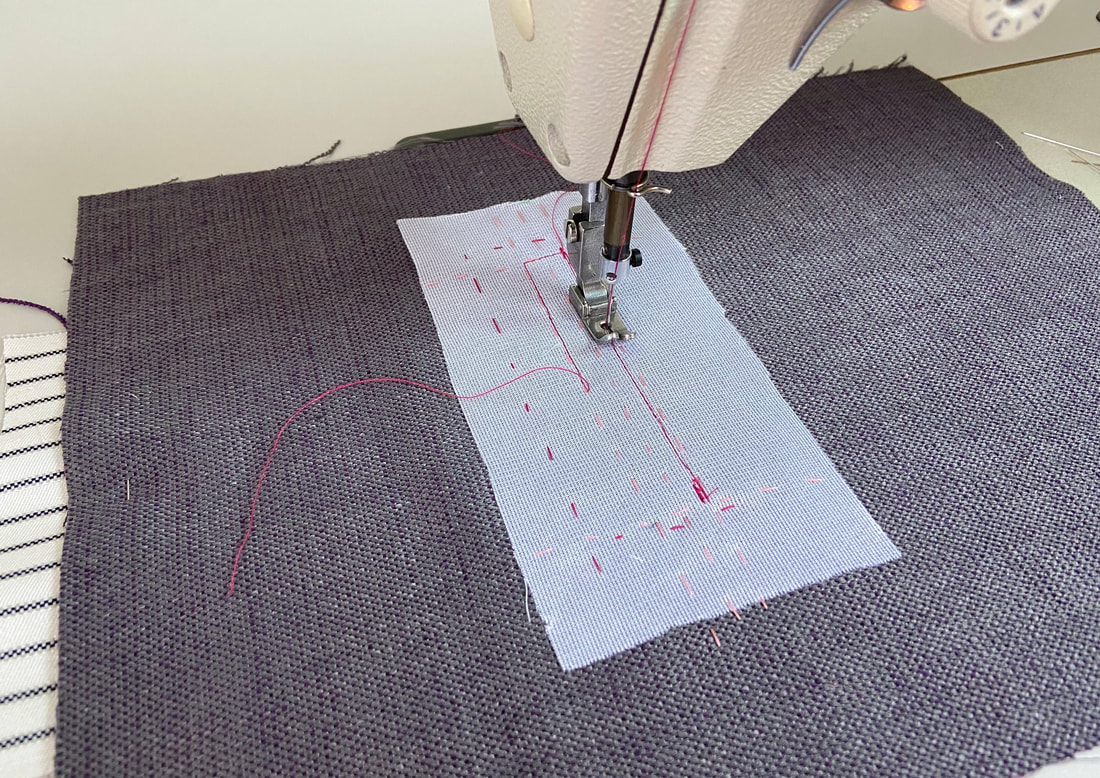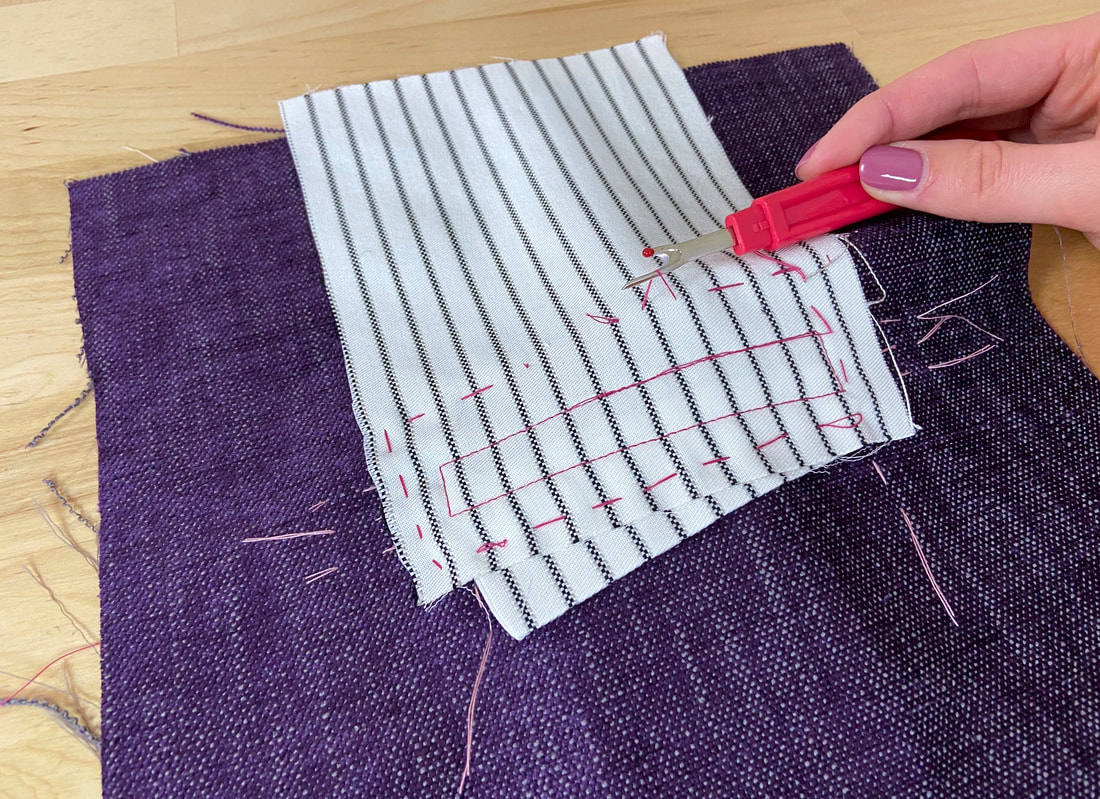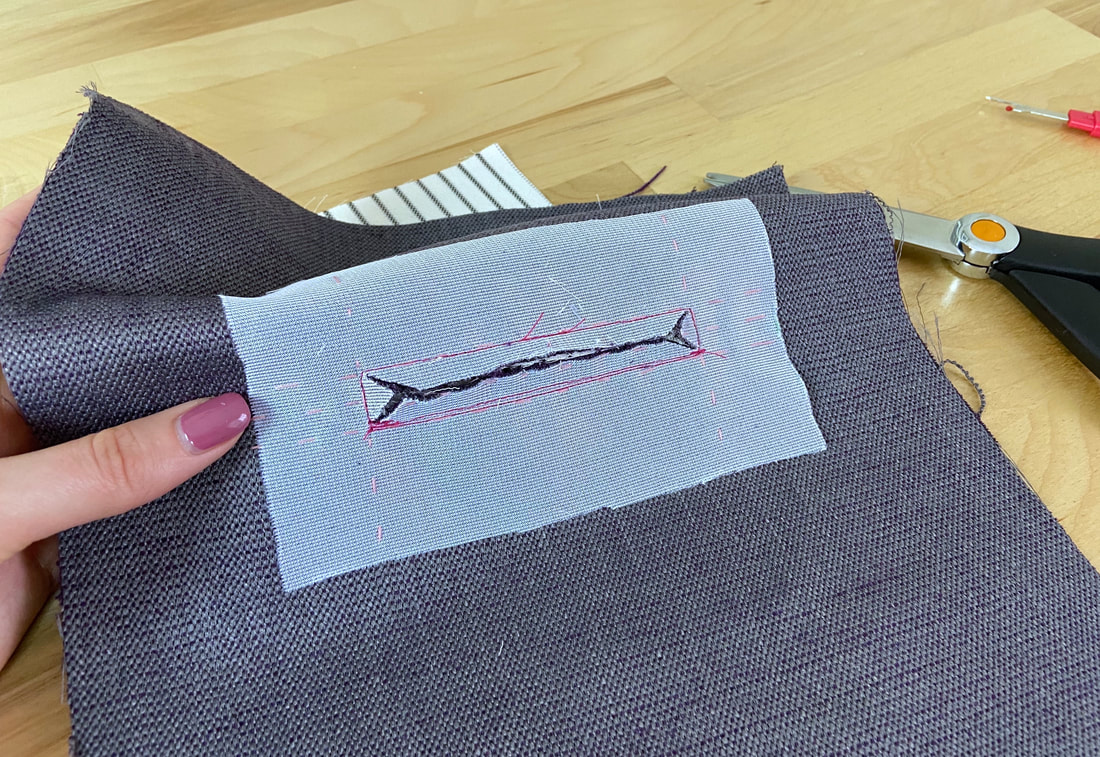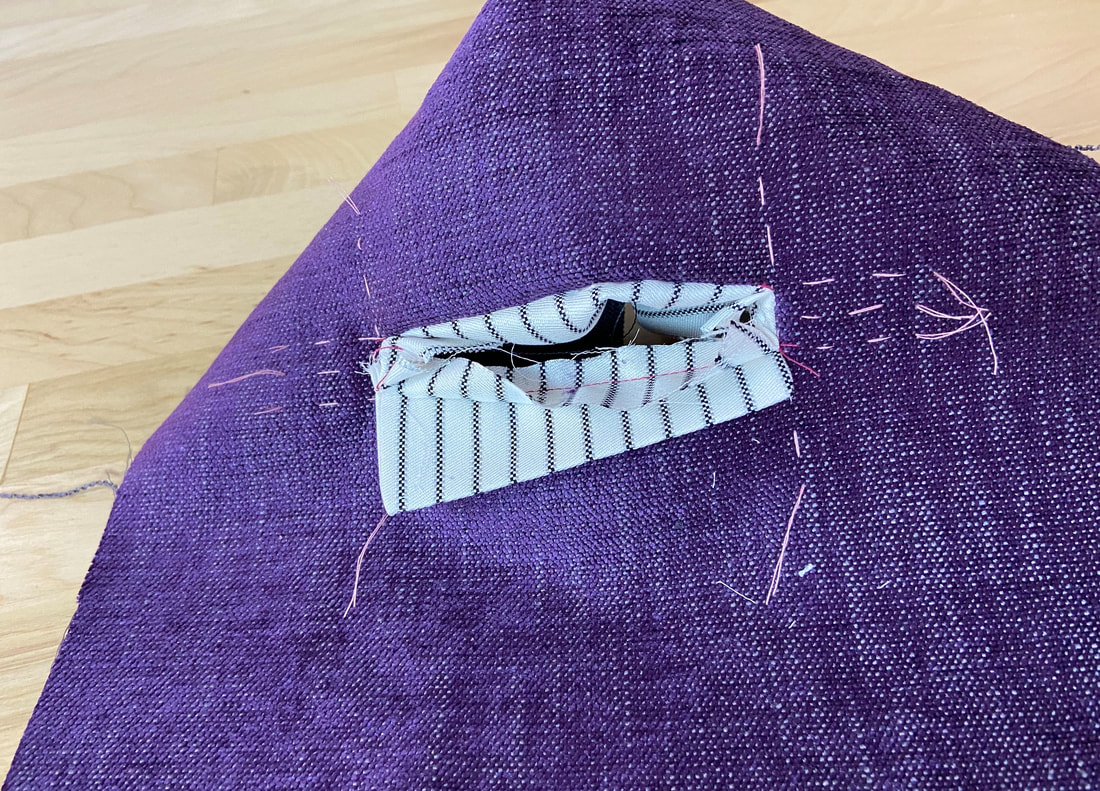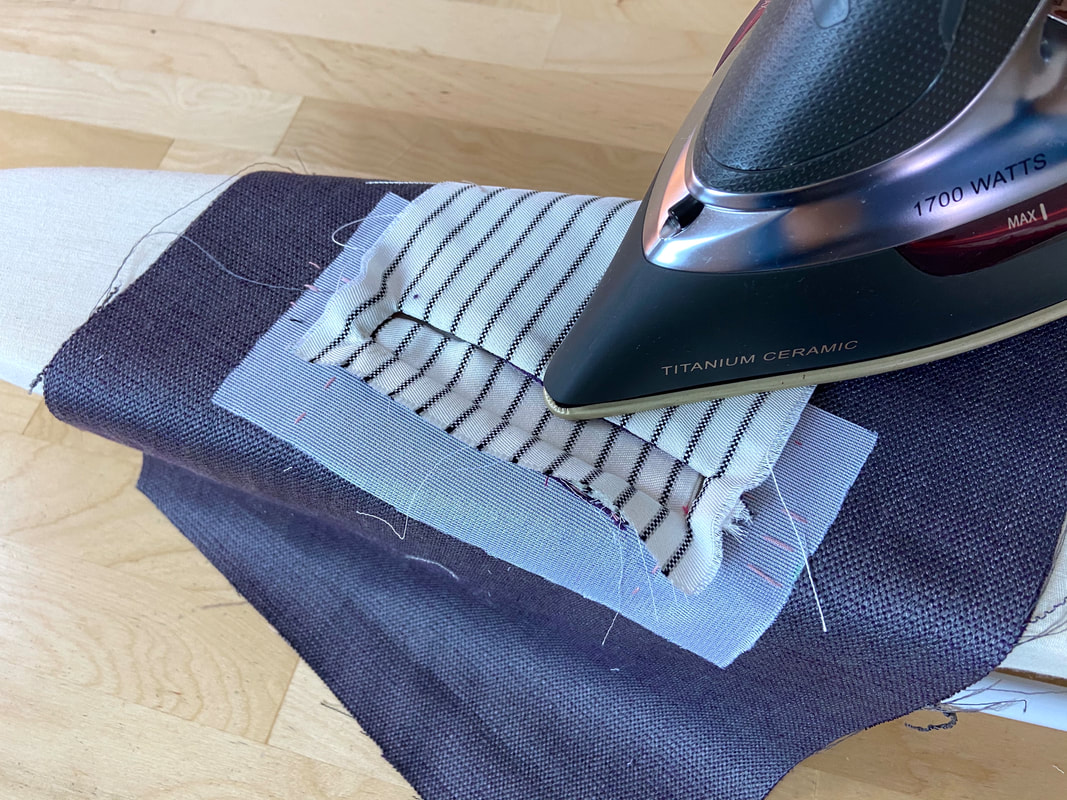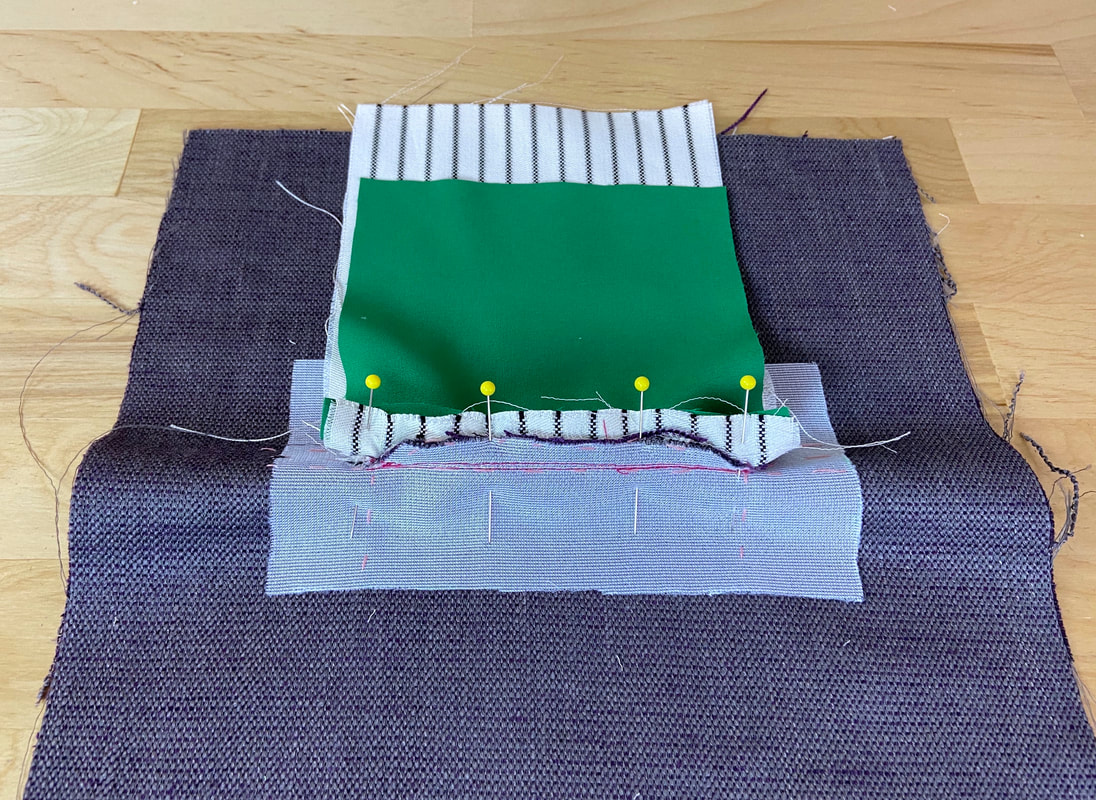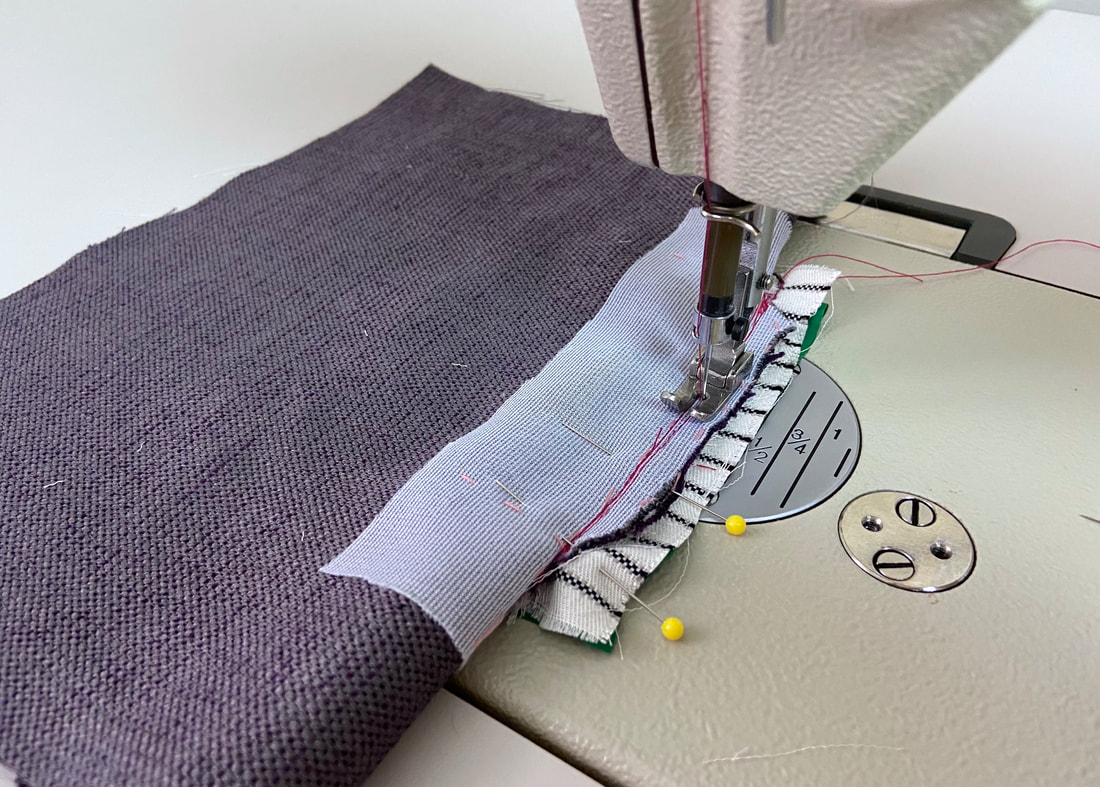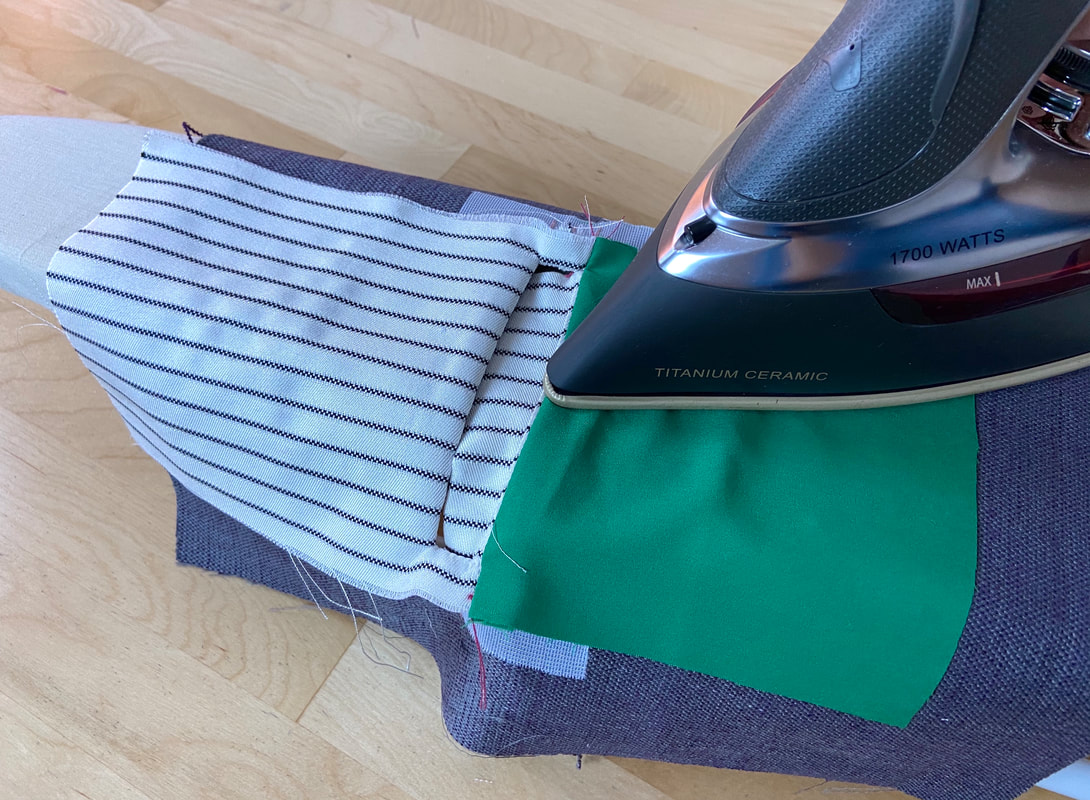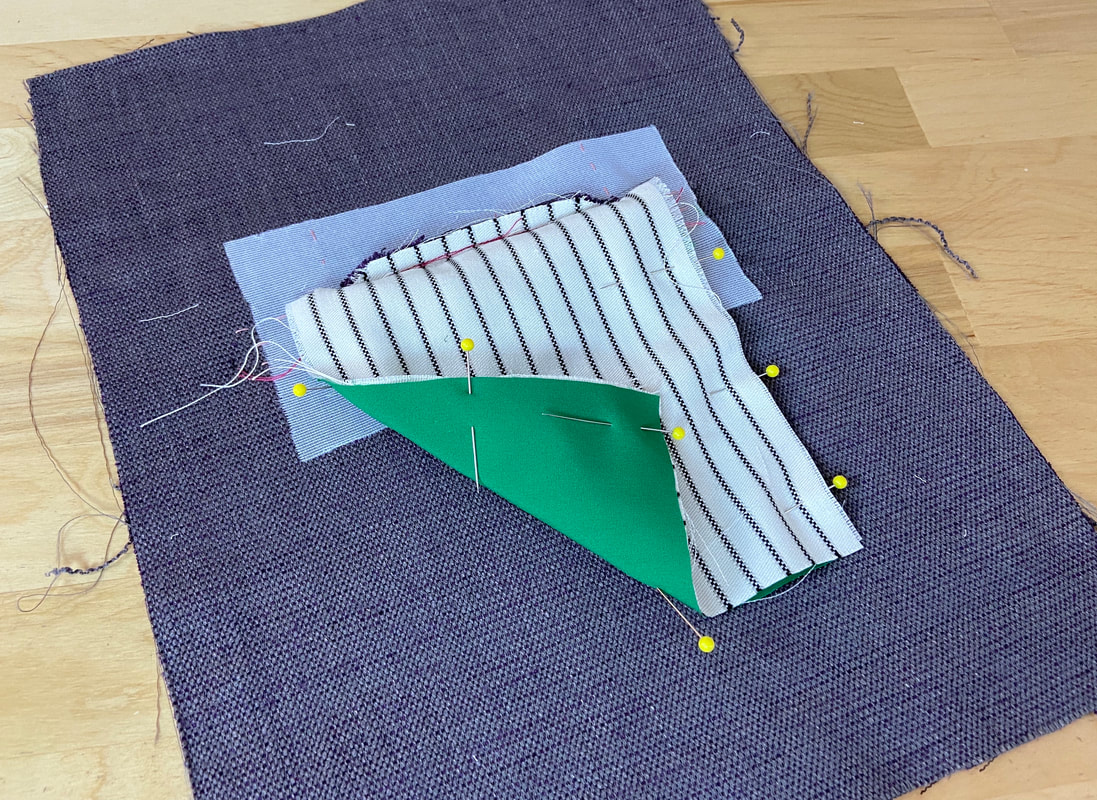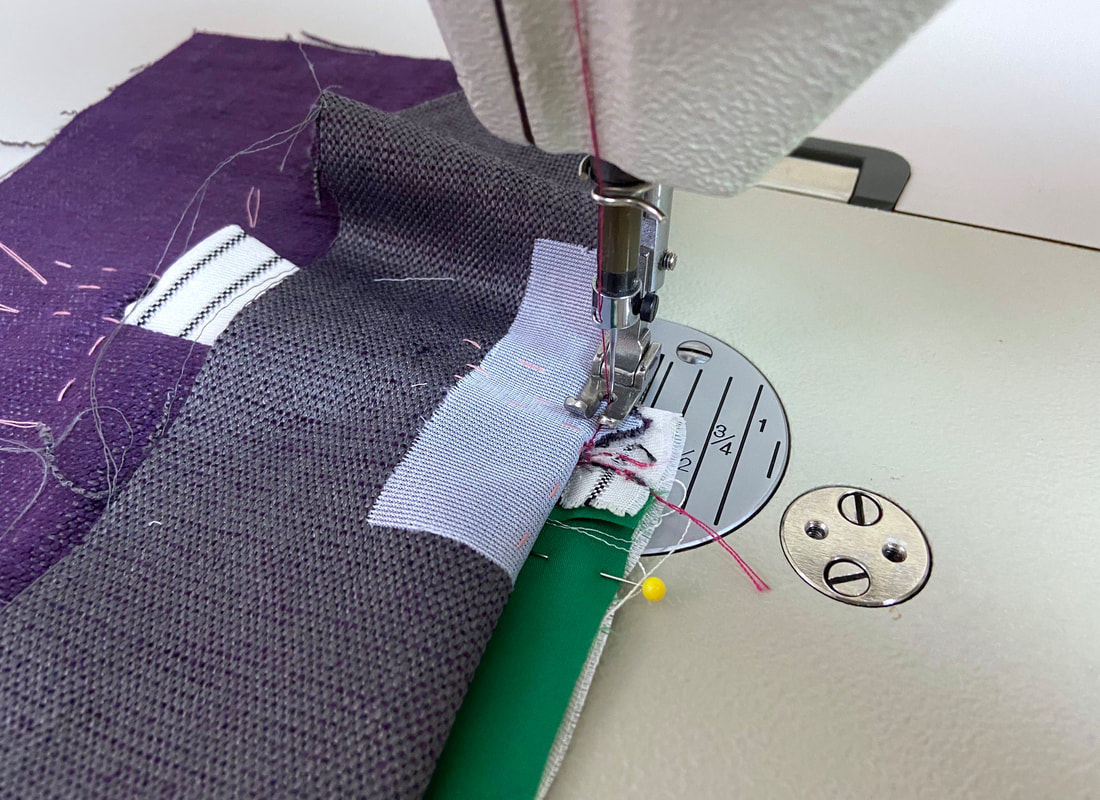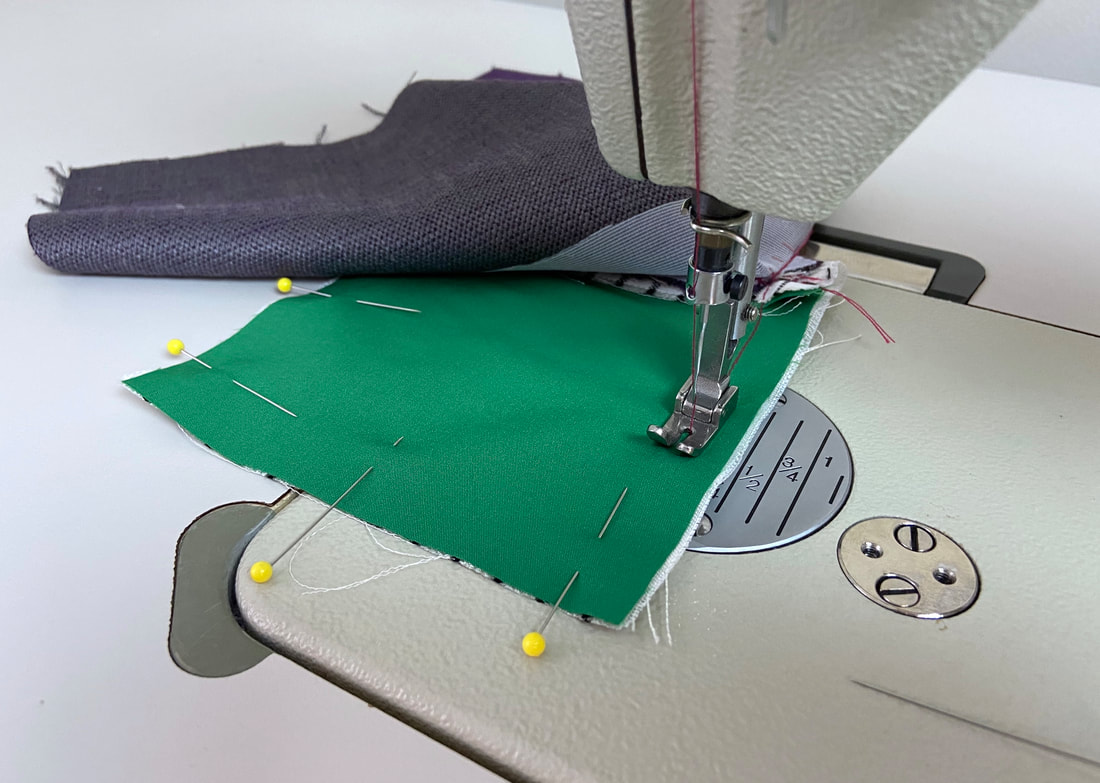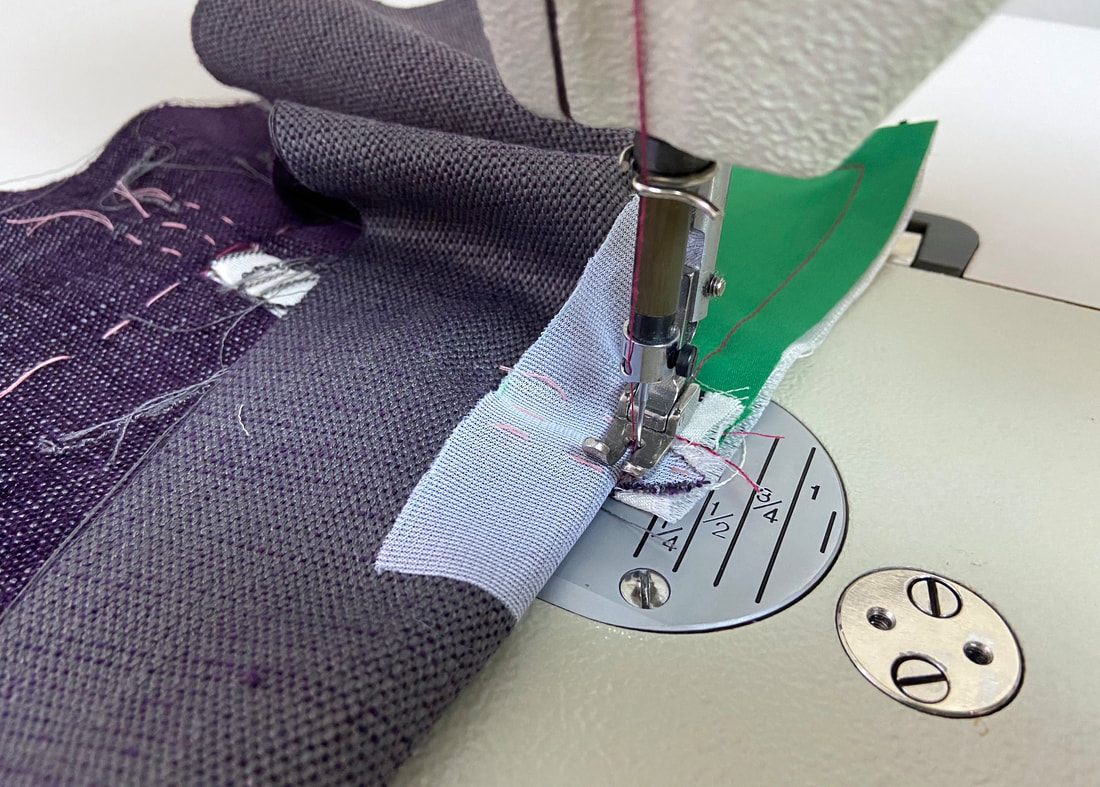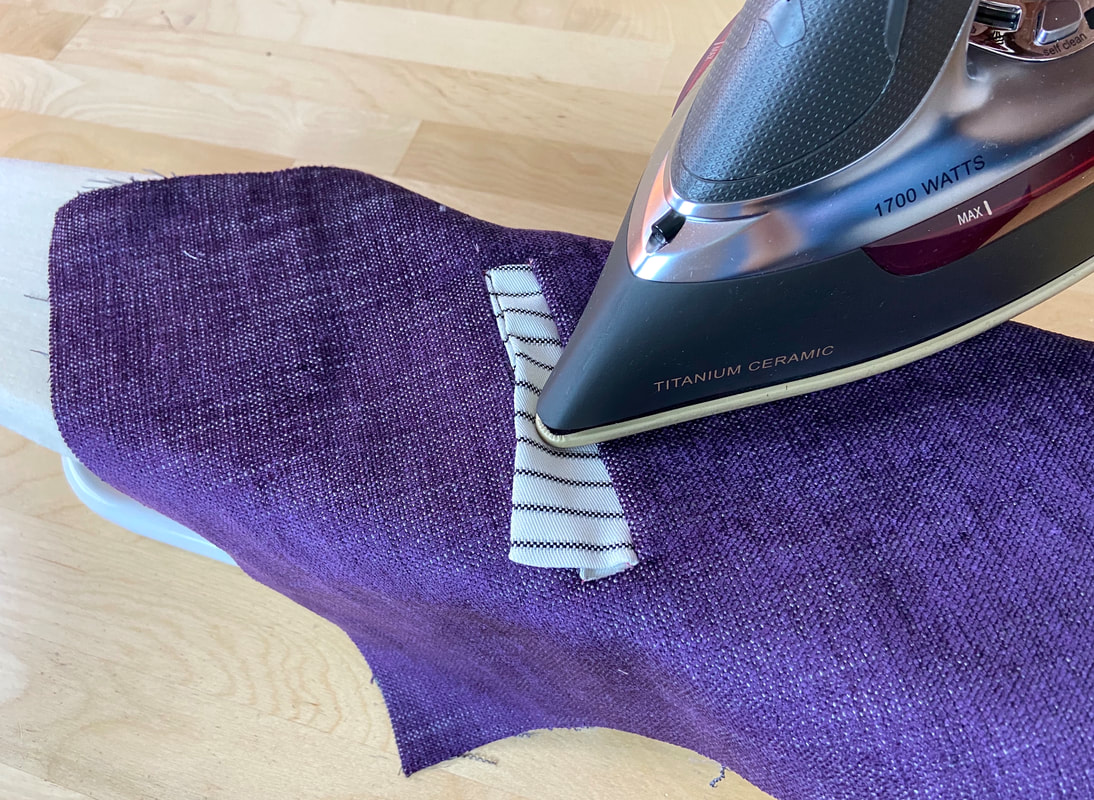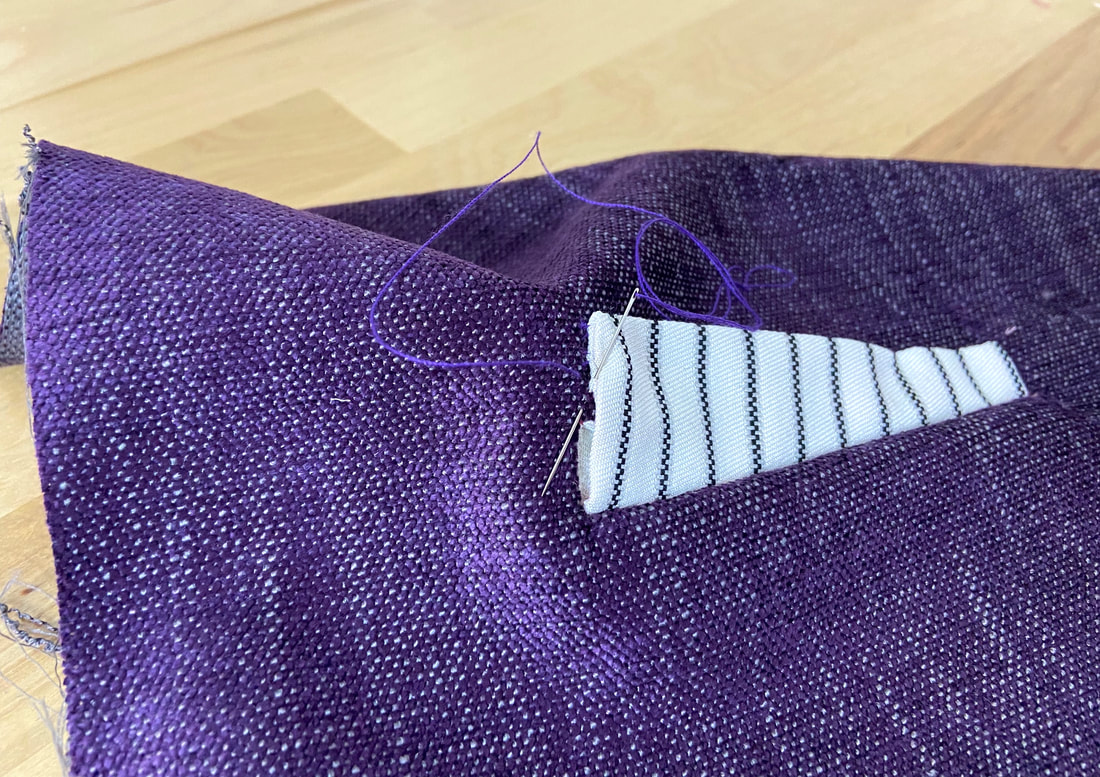Mini Tutorial: How To Sew A Slant Welt Slash Pocket (Hand Stitched Version)
To sew a slanted/asymmetric welt slash pocket, you will need to first draft a pattern for the pocket's welt portion. In this example the welt is taller on one side and shorter on the other. The welt will fold onto itself to self-finish.
1. Start by cutting one welt piece from the fabric of your choice (contrast or same as garment) and a matching piece of fusible interfacing.
Trim the seam allowance off the interfacing piece and fuse it to the wrong side of the welt piece. The addition of the interfacing will stabilize and add structure in the finished pocket application.
1. Start by cutting one welt piece from the fabric of your choice (contrast or same as garment) and a matching piece of fusible interfacing.
Trim the seam allowance off the interfacing piece and fuse it to the wrong side of the welt piece. The addition of the interfacing will stabilize and add structure in the finished pocket application.
2. Fold the welt piece lengthwise down the center with face sides touching such that all edges align. Insert pins perpendicular at each side and machine stitch the sides at the designated seam allowance -1/2" in this case.
3. To minimize bulk, trim the seam allowance down to about 1/4" and clip the seam allowance layers diagonally at each corner as shown above.
4. Flip the welt on its face side to expose the clean-finished side edge, and iron the welt flat with both raw edges aligning.
5. Fuse a piece of interfacing to the wrong side of the garment at the desired slash pocket location. The addition of the interfacing will not only strengthen the slash pocket opening, it will also stabilize the pocket opening edges.
6. On the face of the garment, use hand basting to mark the exact pocket lines at the desired location on the garment. Extend the basting by about 1" at each corner and mark a line lengthwise down the pocket opening center as shown. In this example the finished pocket opening measures 1/2" x 4".
7. Align the finished welt to the bottom pocket line such that the welt's raw edges face inward and the welt's seamline aligns with the pocket's bottom hand basting line. The welt should fit perfectly within the pocket opening lines at each side. Hand baste the welt in this position to secure.
Machine stitch the welt to the garment layer at about 1/8" seam allowance from the welt's raw edges. This stitch is purely functional should not be visible on the face of the final application.
8. To complete the pocket bag, you will need a long and a short pocket piece. Both pieces should be 1" wider than the pocket opening which in this case, is 4".
9. Place the large pocket piece over the pocket opening lines such that the pocket layer edge is aligned 1/2" below the pocket's bottom hand basted line. The pocket layer should cover most of the welt.
Hand baste around the outside of the pocket opening to keep the garment and pocket layer secure in the machine stitching process to follow.
Hand baste around the outside of the pocket opening to keep the garment and pocket layer secure in the machine stitching process to follow.
10. From the garment's wrong side, follow the hand basted pocket opening lines to machine stitch the rectangular pocket opening. You should stitch to the right of the welt attachment stitch from Step 7 above.
Once complete remove the rectangular hand basting that holds the garment and pocket layer together as shown above.
Once complete remove the rectangular hand basting that holds the garment and pocket layer together as shown above.
11. Slash down the center of the rectangular pocket opening (through both the garment and pocket layer) following the center hand basted line as a guide. Stop at about 1/2" on each side.
From the 1/2" distance, slash into each pocket corner as close as you can to the corner stitching but being careful not to accidentally cut through the stitch.
From the 1/2" distance, slash into each pocket corner as close as you can to the corner stitching but being careful not to accidentally cut through the stitch.
12. Flip the pocket layer to the wrong side of the garment and iron the resulting clean-finished pocket opening. On the right side of the pocket application, the welt will naturally shift upward, covering the pocket opening.
13. From the wrong side of the application, align the smaller pocket piece to the pocket's bottom seam allowance edge, and insert pins perpendicularly (as pictured) to keep the layers aligned. Machine stitch the layers following the existing stitch as a guide.
14. Iron the resulting seam with the pocket layer pointing downward.
15. Bring the top pocket portion (larger pocket piece) down over the pocket opening such that the two pocket layers align along all edges. Insert pins perpendicularly to secure.
16. Shift the garment layers to one side to expose the pocket bag sides, and stitch down over the base of the triangle extension. Continue stitching around the pocket bag at the designated seam allowance (1/2" in this case) until you arrive at the other side of the pocket bag.
17. To complete the pocket bag and pocket opening sides, stitch at the base of the second triangle extension as pictured above.
18. Flip the pocket application on its face side and iron the welt seamline with the welt pointing up.
19. To complete the pocket application, slipstitch the welt's finished sides to the garment layer underneath. For best results, use matching color thread.

